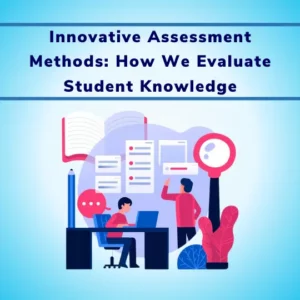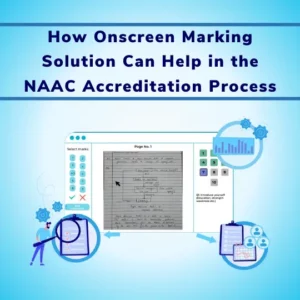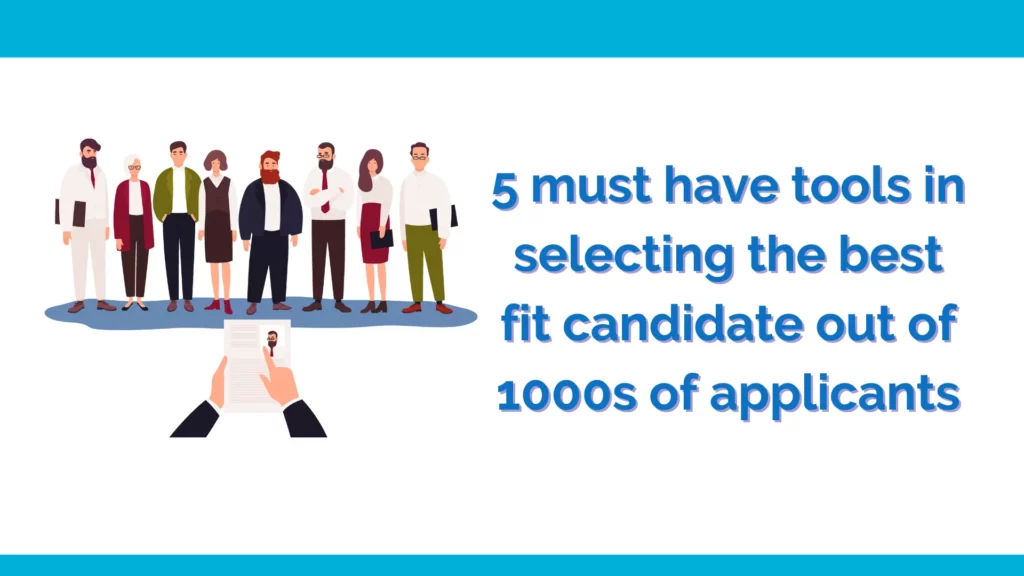
Article Contents
Introduction:
With an increasing number of job applications for each available position, it can be daunting and time-consuming to review every application in detail. However, recruiters understand the importance of taking the time to review each application thoroughly in order to make the best hiring decisions.
Skimming through applications or only selecting candidates based on certain qualifications may mean missing out on great candidates, so it’s important to give each application the time it deserves.
When dealing with a large volume of applications, say 1000 applications, for example, there are two scenarios that you may go ahead with-
Scenario 1- Go through the initial 500 applications out of 1000 and select the eligible matches.
Scenario 2- Go through all the applications and select the eligible match.

Let’s try and understand the implications arising from each of the scenarios-
Scenario 1- If you select the candidates by reviewing 500 applications, you may end up selecting a good candidate, but not probably the best one that you could choose from the available 1000 candidates.
Scenario 2- As an ideal recruiter, one would prefer to go through all 1000 applications and choose the best available candidate. But this process is time-consuming and can be hard to follow when you have been assigned time-bound recruitment.
What would be an ideal scenario?
Productivity is highly linked with the right mindset, skipping the applications and proceeding ahead to the next steps of recruitment would surely not be an option to choose. And when the business needs a new recruit within a span of a few days to match the business’s needs, it is not quite realistic to go through all the applications received.
An ideal scenario is neither scenario 1 nor scenario 2 above. An ideal scenario would be when you can consider every applicant and can review profiles at a very high speed with great accuracy.
It may sound impossible to review 1000s of profiles within a very short time and choose the best candidate, but with technology, it is not only possible to screen the candidates for job roles but it is also possible to make the screening process more efficient and faster.
Technology tools that help you to handle the large volume of applicants-
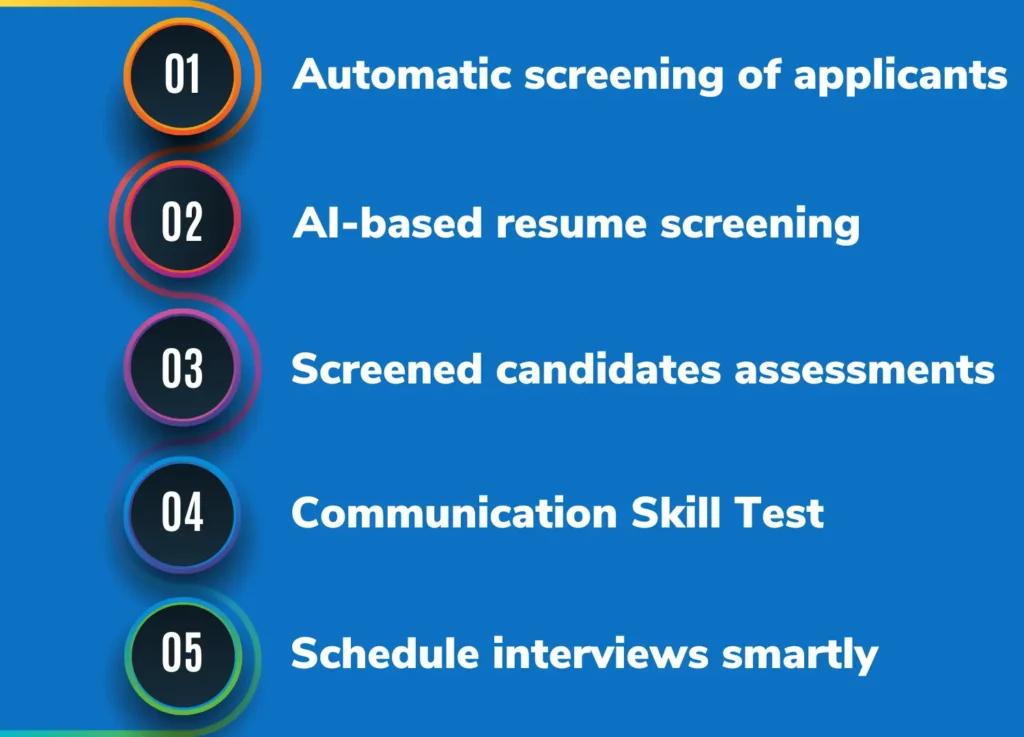
1. Automatic screening of applicants-
The application form for the job post must be designed in such a way that certain fields are marked as mandatory. For example, a job role, say, Sr Software developer at your firm requires experience of a minimum of 3 years. In the job application for a Sr. Software developer, there should be a field where the candidate needs to mention their experience.
If the candidate does not meet the criteria, the system automatically rejects the application making it possible for you to receive applications only from eligible candidates. This can be done by making simple modifications in the application form, no need to work with complex algorithms.
2. AI-based resume screening–
Artificial intelligence is fascinating, it has found its applications in all fields and the recruitment process is not an exception. AI-based resume screening works to further screen resumes on the basis of the job description.
Here are the steps to follow for making AI work for resume screening-
- Mention certain keywords while creating the job description. For example, for a Data Scientist Job Role, the keywords are- SQL, Python, R, Data Analytics, ETL, Data summarization, Data Interpretation, Statistical Analysis, Advanced Excel, and So On. Try to make this list exhaustive pertaining to the job role.
- The candidates with relevant skills mention their skill sets in their resumes. For example, a data scientist working in the healthcare industry would put- Data Analysis, Clinical Trial Data Analysis, and Research Data Analysis.
- Once the applications are received, you can load these resumes in the AI tool and define the keywords for screening these applications. You can define the mandatory, and optional keywords as well. The AI tool scans the applications and finds out the best-fit resumes and ranks them as per identified skill sets.
Whoa! you have screened 100s of applications with a single click, not just fast, but more efficiently.
There are a variety of applications available for AI base candidate screening, eightfold.ai is one such example of software to fasten the recruitment process with AI.
3. Conduct assessments for screened candidates–
Once the resumes are screened, the very next step would be to conduct a screening assessment. These assessments are specially designed for assessing the personality, skill set, and aptitude of the candidate.
Assessments of personality traits-
- Decision-making capacity assessment
- Critical thinking assessment
- Situational aptitude
Assessments for skill set and aptitude-
- Programming/ coding test
- Technical knowledge-based tests
- Psychrometric and aptitude tests
These assessments can be conducted using the proctored assessment engines, these tests can be attempted by the applicants located at any remote location at flexible timings. These assessments can be conducted in the proctored mode to nullify the chances of malpractice during the assessments.
Below features of the online assessment engine can help you to save time-
- Single-click candidate data import, and API integration with Job portals for syncing candidate data
- Single-click assessment assignment to candidates
- Result generation and export.
The assessment process can be completed within a span of a few hours from end to end.
4. Conduct Pre-Interviews Communication Skill Test–
Good communication skills are one of the major prerequisites for success in the job role, certain job roles may even demand above-average communication skills. Although many may disagree; many recruiters may prefer a person with better communication skills over a person with good technical knowledge for certain job roles.
For example, for the job role of Scientific Communication Manager, one would prefer to onboard a candidate with better communication skills than one with better technical knowledge.
It is a better approach to conduct the communication skill tests in the form of audio-based bulk interviews after conducting the technical skill test. This makes sure that you will end up a candidate with not only good technical knowledge but good communication skills as well.
Here is how you can conduct pre-interview communication skills–
- Step 1- Define the questions in the bulk interview system, these questions should be defined in such a way that students would speak and record their answers. For example, Please tell us about your background and interests, and special achievements.
- Step 2- Assign pre-interview communication test to candidates, you may choose a strict time for the same or can also provide schedule flexibility
- Step 3- Students receive the login credentials for attempting the pre-interview communication skill test, students record their answers and submit the voice recordings, these recordings get stored on secure cloud storage.
- Step 4- The assessor/evaluator can access these recordings and choose candidates with good communication skills for the final interview.
5. Schedule interviews smartly with tools–
Scheduling an interview with the candidate seems to be an easy task, but a small mistake may make you end up losing a lot of time. Many recruiters confess that the candidates do not attend the interview on time, or request to reschedule the interview at the last minute.
These issues arise mainly because of miscommunication or delayed communication, the tools for scheduling interviews can help you to make sure that the interview timings are properly communicated and reminded to the candidates.
With these tools, it is also possible to automatically reschedule the interviews without you having to find the empty slot manually, these tools can be synced with the calendars like Google Calendar and MS Teams calendar to make sure that the scheduled interviews do not conflict with any other meetings.

Conclusion-
If you choose not to use the available tools and resources, you’re likely to fall behind in productivity. Undoubtedly, if we, as professionals, had not chosen to use technology, the progress we’ve made would have been unimaginable.
While using tools can be tricky and time-consuming to set up, once they’re in place, they can make it easier than ever to be highly productive and efficient when handling a large volume of applicants and choosing the best candidate for the job role.


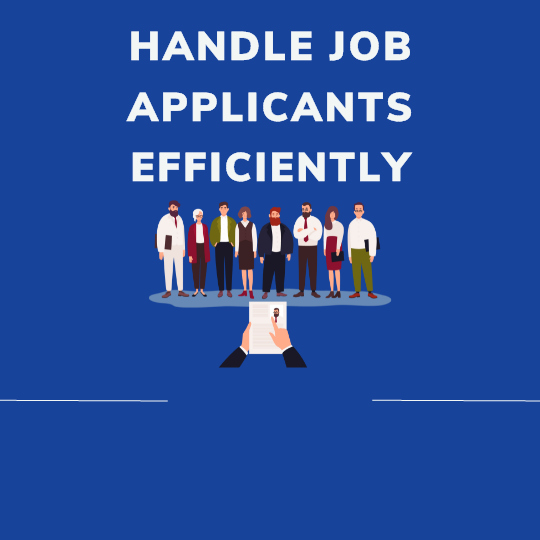
![How Government-Led Exams at 250+ Locations Are Setting New Standards of Integrity [Case Study]](https://www.eklavvya.com/blog/wp-content/uploads/2024/04/Enhancing-Exam-Integrity-Government-Certification-in-250-Locations-150x150.webp)
![Transforming Central Govt. Exams Evaluation: How Onscreen Marking is Leading the Charge [Case Study]](https://www.eklavvya.com/blog/wp-content/uploads/2024/04/How-Onscreen-Marking-Revolutionized-Central-Govt-Exams-Case-Study-1-150x150.webp)
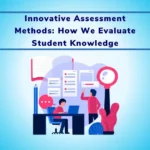
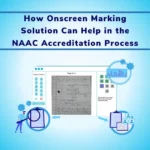
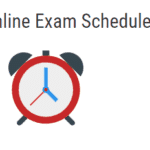

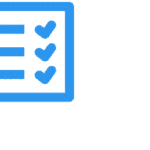










![How Onscreen Marking Revolutionized Central Govt Exams [Case Study]](https://www.eklavvya.com/blog/wp-content/uploads/2024/04/How-Onscreen-Marking-Revolutionized-Central-Govt-Exams-Case-Study-1-300x300.webp)
